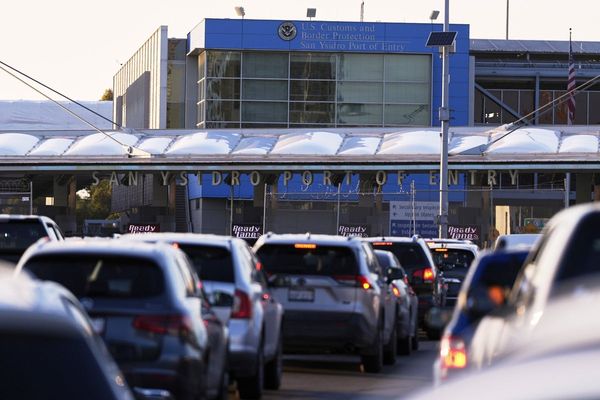
A Savings Incentive Match Plan for Employees (SIMPLE) IRA is a retirement plan designed for self-employed people and small businesses with 100 or fewer employees. It's a cheaper (and easier) plan for an employer to set up compared to a traditional 401(k). However, the amount a worker can save in a SIMPLE IRA is less than a 401(k).
2025 SIMPLE IRA contribution limits
For 2025, the annual contribution limit for SIMPLE IRAs is $16,500, up $500 from 2024. Workers age 50 or older can make additional catch-up contributions of $3,500 (unchanged from 2024), for a total of $20,000. The contribution limits are also the same if you’re self-employed.
By comparison, workers younger than 50 can set aside $23,500 in a traditional 401(k) in 2025, up from $23,000 last year. They can add another $7,500 if they're 50-plus.
Both 401(k) and SIMPLE IRAs have new rules for catch-up contributions starting in 2025, due to SECURE 2.0. A higher catch-up contribution limit applies for those aged 60-63. 401(k) plan participants in that age range may contribute an additional $11,250 instead of $7,500, raising the total limit to $34,750 in 2025.
The new catch-up contribution limit in 2025 for SIMPLE IRAs will increase to the greater of $5,000 or 150% of the regular age 50 catch-up contribution limit for SIMPLE IRA plans. This supersized catch-up contribution is $5,250 for 2025, for a contribution total limit of $21,750, which still lags behind 401(k) limits. Cost of living adjustments to the catch-up limit will begin in 2026.
Employee contributions to a SIMPLE IRA are made on a pretax basis, which lowers taxable income. The invested money grows tax-sheltered until you withdraw it in retirement, when those distributions are taxed as ordinary income.
If you pull money out before age 59-1/2, you face a 10% early-withdrawal penalty on top of taxes. The withdrawal penalty increases to 25% for SIMPLE IRAs if money is pulled out within two years of signing up for the plan.
2024 and 2025 SIMPLE IRA contribution deadlines for employees and employers
There are different deadlines for self-employed owners with no employees, employees and employers to make contributions to SIMPLE IRAs.
Employee contributions. Contributions to SIMPLE IRA plans that are taken from an employee's paycheck as a salary reduction contribution ( also called elective deferral contributions) are due within 30 days after the end of the month in which the amounts would otherwise have been payable to the employees in cash. For instance, the contributions must be deposited into the SIMPLE plan by September 30 of the same year for money taken from an employee's pay in August.
Self-employed with no employees. For self-employed persons with no common-law employees, the latest date for depositing salary reduction contributions for a calendar year is 30 days after the end of the year, or January 30th.
Deadlines for employer contributions. The IRS requires contributions made on the part of the employer are due by the business' filing due date for the tax year — April 15 or October 15 if there is an extension. The Department of Labor (DOL) takes a different stance than the IRS.
The DOL requires employee contributions to be deposited as soon as reasonably possible. For businesses with over 100 employees the contributions must be deposited no later than 30 days after the end of the month in which the amounts would otherwise have been payable to the employee and no later than seven business days for businesses with fewer than 100 employees.
New Roth SIMPLE IRA
A SIMPLE IRA can now be set up as either a traditional IRA or a Roth IRA. The Roth SIMPLE IRA was created by the 2022 SECURE Act 2.0, so some employers may not offer it yet.
If the SIMPLE IRA is a Roth, the employee contribution goes into the account after tax. Then the money can grow tax-free for decades and will be tax-free when withdrawn from the account beginning at age 59-½.
For 2024, employees could have contributed up to $16,000, and $19,500 for employees age 50 and over. Roth contributions are not deductible but distributions are tax-free in retirement. In 2025, this contribution limit increases by $500 to $16,500 and up to $20,000 for those age 50 and over.
These dollar limits are aggregate for all pre-tax and Roth deferrals; in other words, you can’t contribute $16,500 in pre-tax deferrals and then an additional $16,500 in Roth deferrals in 2025.
Similar to 401(k) plans, employees will most likely be able to contribute any combination of pre-tax and Roth deferrals up to the annual limit. For example, an employee under age 50 may be able to contribute $10,000 in pre-tax deferrals and $6,000 in Roth deferrals to reach the $16,500 limit in 2025.
Employer contributions to SIMPLE IRAs
Workers participating in a SIMPLE IRA will always get a helping hand saving for retirement because employers must make some form of a contribution to employees' accounts. Self-employed people are allowed to contribute both their own and the employer’s share to a SIMPLE IRA.
An employer can choose to either make a dollar-for-dollar match of up to 3% of a worker's pay or contribute a flat 2% of compensation, whether the employee contributes or not. If your employer matches dollar-for-dollar up to 3% of pay, make sure you're contributing at least enough to qualify for the full match. If an employer contributes the flat 2% amount, the calculation for those non-elective contributions could not be based on more than $345,000 of the employee’s salary in 2024. This increased by $5,000 to $350,000 in 2025.
The money your employer contributes is vested immediately, which means those contributions are yours from the start and you get to take them with you when you leave no matter how long you’ve worked for the company. By contrast, other employer retirement savings plans, such as 401(k)s and 403(b)s, may require that you work for that employer for a set period, such as three or four years, to be fully vested.
SIMPLE IRAs offer a much broader selection of investments than most employer-sponsored retirement savings plans. In a SIMPLE IRA, workers can not only choose from thousands of mutual funds and exchange-traded funds but also hold individual stocks and bonds. The best investment is one that fits your long-term goals at the right price.
How SIMPLE IRA savers can build a bigger nest egg
SIMPLE IRA participants are allowed to contribute to an individual IRA at the same time, enabling retirement savers to maximize their contributions on two fronts. If you're already stashing away the maximum contribution allowed in your SIMPLE IRA — $16,500 for employees younger than 50, or $20,000 for 50-plus workers in 2025— but want to save even more for retirement, consider opening a separate traditional IRA or Roth IRA.
Self-employed people may also fund a traditional IRA or Roth at the same time but not a SEP IRA. In 2025, the contribution limit is $16,500 and the catch-up contribution limit is the same. And those aged 60-63 can contribute an additional $5,250 to their accounts.
For 2025 (and also in 2024), individuals younger than 50 can contribute up to $7,000 to a traditional IRA or Roth IRA. Retirement savers age 50 and up can make an additional $1,000 catch-up contribution. There is no super catch-up contribution for traditional or Roth IRAs.
Roth IRAs have income limits. The maximum amount you can contribute to a Roth IRA for 2025 begins to phase out once modified adjusted gross income hits $150,000 for single filers and $236,000 those who are married and filing jointly.
There's no tax deduction for Roth IRA contributions. Contributions to a traditional IRA for both 2024 and 2025 are tax-deductible, though this benefit will phase out if you also contribute to a 401(k) plan at work and reach a certain income threshold. The tax deduction phases out for single filers who have a modified gross income between $79,000 and $89,000 in 2025, up from $77,000 and $87,000 in 2024.
If an IRA contributor is covered by a work retirement plan, joint filers must earn $126,000 or less to claim the full tax deduction in 2025, up from $123,000 in 2024. The deduction is fully phased out once you make $146,000 or more in 2025, up from $143,000 in 2024. If an IRA contributor is not covered by a retirement plan at work, then the deduction is phased out between $236,000 and $246,000 in 2025, up form $230,000 and $240,000 for joint filers in 2024.
Related Content
- SECURE 2.0 Act Summary: New Retirement Plan Rules to Know
- Taxes in Retirement: How All 50 States Tax Retirees
- A 10-Year Checklist For Retirement Planning







